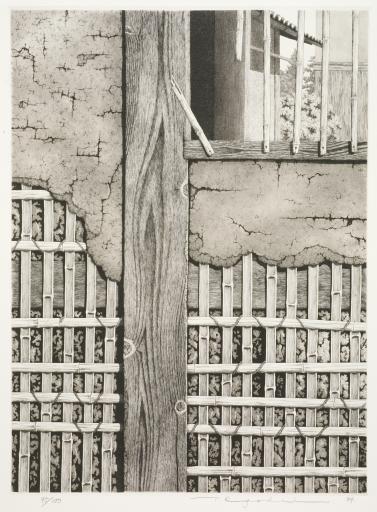Wall #4, Tanaka Ryōhei
Artwork Overview
Tanaka Ryōhei, artist
1933–1999
Wall #4,
1984, Showa period (1926–1989)
Where object was made: Japan
Material/technique: etching
Dimensions:
Sheet/Paper Dimensions (Height x Width): 467 x 346 mm
Sheet/Paper Dimensions (Height x Width): 18 3/8 x 13 5/8 in
Mat Dimensions (Height x Width): 25 x 20 in
Sheet/Paper Dimensions (Height x Width): 467 x 346 mm
Sheet/Paper Dimensions (Height x Width): 18 3/8 x 13 5/8 in
Mat Dimensions (Height x Width): 25 x 20 in
Credit line: Museum purchase: Lucy Shaw Schultz Fund
Accession number: 1990.0059
Not on display
If you wish to reproduce this image, please submit an image request

